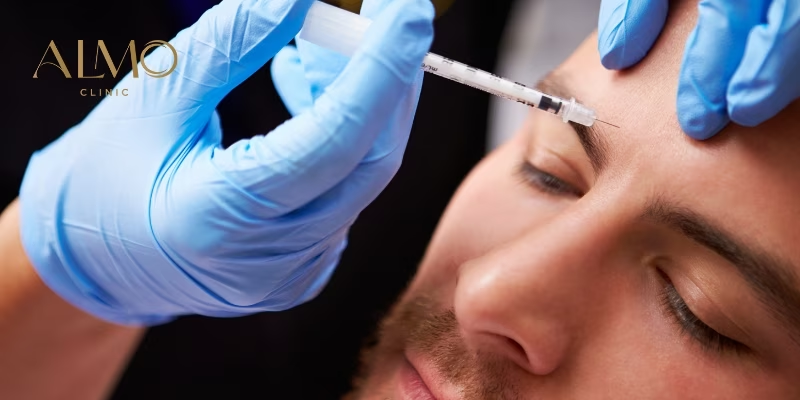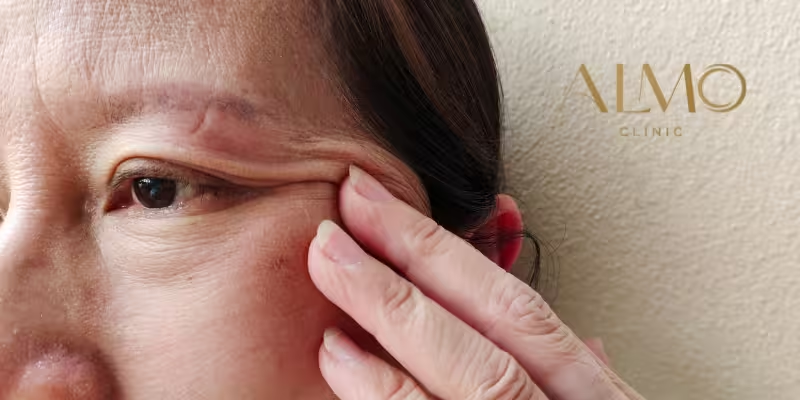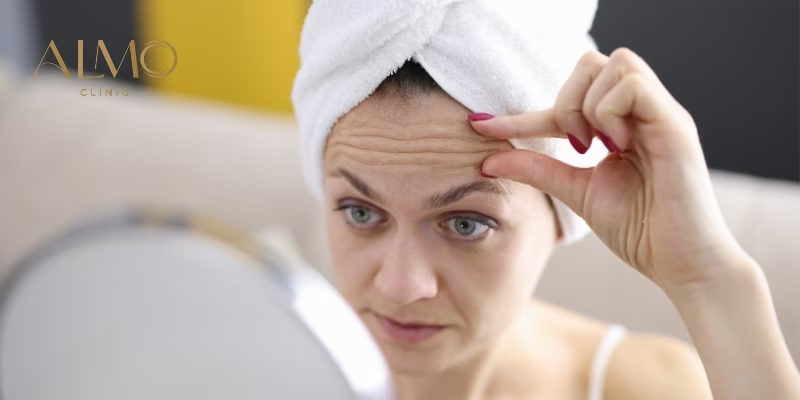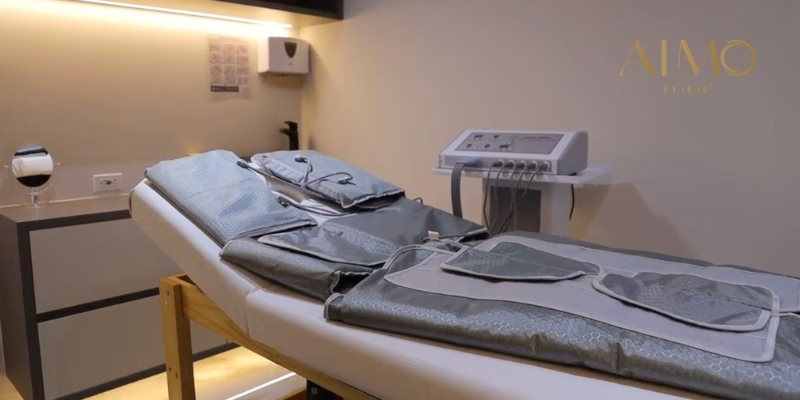“Doctor, I have the money ready. Just tell me when we can schedule.”
Chloe was 26, had flawless skin, and had just asked me to inject Botox across practically her entire face. Her mental budget: $3,200.
I took a photo under natural light and showed it to her.
There wasn’t a single visible line at rest.
“Chloe, I’m not going to do any of that.”
That was the first of 43 times I said “no” during 2024. In total, I turned down over $68,000 in treatments that patients wanted but didn’t medically need.
This decision fundamentally changed my practice and taught me something disturbing: we’re creating an epidemic of aesthetic treatment dependency in young women who don’t need them.
Here’s why turning down easy money became my most important medical tool.
The invisible pressure walking into my office
Over the past two years, my patient demographic shifted dramatically.
Previously, I consulted with women aged 35-45 who had established lines seeking specific solutions. Now, 60% of my consultations are women aged 25-32 with no real signs of aging, but convinced they “need” preventative Botox.
Social media influence is devastating. They arrive with screenshots of 23-year-old influencers showing their “preventative treatments,” articles about how “prevention beats correction,” and social pressure from friends who’ve already started treatments.
Chloe confessed during consultation: “All my friends are already getting Botox. I feel like if I don’t start now, I’ll fall behind.”
This isn’t a medical problem. It’s a psychological problem amplified by commercial marketing.
The cases that taught me to say “no”
Sophia, 28: the perfectionist
Sophia worked in tech and had researched “everything about aesthetic medicine” for months. She arrived with a detailed list of treatments she wanted: Botox in forehead, glabella, crow’s feet, neck, and “micro-dosing” in the upper lip.
Her specific request: “I want to look exactly like I do now, but without being able to make expressions that create lines.”
During evaluation, her skin showed only completely normal dynamic lines. When she smiled, mild crow’s feet appeared. When concentrating, her glabella was slightly marked. At rest, her face was impeccable.
I explained that if I completely eliminated her ability to make expressions, she’d lose naturalness. “That’s exactly what I want,” she responded.
That’s when I understood she wasn’t seeking aesthetic medicine. She was seeking total control over her image—something no medical treatment should provide.
Valentina, 25: the anxious
Valentina arrived after seeing a viral video about “early signs of aging.” She’d self-diagnosed lines that, according to her, appeared when she smiled “too hard.”
She asked me to apply “very gentle” Botox because she’d read that “starting early makes it last years without needing as much.”
During 20 minutes of evaluation under different lighting, I couldn’t identify a single static line. Her “smile lines” were normal skin texture when contracted by facial expression.
I showed her photos of her face at rest and asked: “Where exactly do you see a wrinkle?”
She was silent for several seconds. “Well, they’re not visible now, but when I laugh…“
“That’s called having normal human facial expressions,” I explained.
Isabella, 30: the influenced
Isabella had seen an influencer’s Instagram profile documenting her “preventative treatments” since age 24. “She looks incredible and says it’s because she started early with Botox.”
She showed me the influencer’s photos and asked for “the same preventative protocol.”
I explained that I didn’t know that person’s medical history, genetic factors, or actual condition before treatments. “Copying someone else’s protocol without specific evaluation is like taking someone else’s prescription medication.”
During consultation, I discovered Isabella actually had one incipient static line in her glabella from long computer hours. But the rest of her request (forehead, crow’s feet, neck) was completely unnecessary.
I proposed treating only that specific area. Her immediate reaction: “But I want the complete treatment like hers.”
The most difficult conversation I have weekly
When a young patient asks me for preventative Botox without real medical indication, I have a specific conversation I’ve perfected over years.
First, I show her face under direct natural light. “Make all your expressions: smile, frown, raise your eyebrows, gesticulate as when you’re talking.”
Then I ask her to completely relax her expression. “Now look at yourself without making any gesture.”
Invariably, her face looks perfect.
“Do you see any lines now?” I ask.
The answer is always the same: “No, but when I laugh…”
“That’s exactly what I expect to see in a woman your age. Lines that appear only when making expressions are completely normal and healthy.”
Then I explain something no other specialist has told them: “If I apply Botox now, I won’t be preventing future wrinkles. I’ll be creating dependency on a treatment your skin doesn’t need.”
Why poorly understood preventative medicine is dangerous
Preventative aesthetic medicine makes sense when there’s something specific to prevent. If there are already incipient static lines, early intervention is smart. If there are only normal dynamic lines, intervening creates a problem where none exists.
“Preventative” Botox in young skin without medical indication generates several problems:
Premature psychological dependency
Once you start using Botox regularly, your perception of your “natural” face changes. When the effect wears off, you look “worse” than before the first treatment, even though objectively your skin is exactly the same.
Valentina returned two years after I told her she didn’t need treatment. She’d gone elsewhere where they did apply it. “Now I can’t be without it. My forehead looks horrible when it wears off,” she told me.
Her forehead looked exactly the same as two years before, but she could no longer see it objectively.
Gradual loss of naturalness
Botox applied repeatedly to muscles that weren’t hyperactive can generate progressive muscular weakening. Over years, this can result in less natural expressions or subtle asymmetries.
Unnecessary economic cost
A woman who starts preventative Botox at 25 will spend approximately $80,000 on treatments over the next 20 years. If she had waited until 35 when she actually needed it, she’d spend less than half.
The questions I now ask in every consultation
My evaluation protocol includes specific questions that reveal whether motivation is medical or emotional.
“What specifically bothers you about your face?”
If the answer includes “I look tired,” “I want to look younger,” or “I don’t like how I look in photos,” the problem isn’t medical.
If they respond “I have this specific line that doesn’t go away,” that does require medical evaluation.
“What do you expect to change in your life after treatment?”
Concerning answers include: “feel more confident,” “be more attractive to my partner,” “look better than my friends,” “never age.”
No medical treatment should be the solution to fundamental insecurities or unrealistic expectations.
“Would you be willing to wait six months if I tell you it’s best for your case?”
This question reveals the level of emotional urgency. If the idea of waiting generates immediate anxiety, the motivation isn’t medical.
My current statistics: 40% don’t need immediate treatment
During 2024, of every 10 women aged 25-35 who consulted for preventative Botox, 4 needed no immediate treatment. They only needed education about normal aging and basic care routines.
3 more needed only optimized sun protection and annual monitoring. No medical intervention.
2 had a specific area that justified preventative treatment, but not the complete protocol they requested.
Only 1 in 10 actually needed the multiple treatment they’d requested.
This statistic completely contradicts what the cosmetics industry and social media suggest.
What happened to the patients I said “no” to
Two-year follow-up of the 43 patients I rejected:
31 of them thanked me later. They followed my basic care recommendations and maintain excellent skin without treatments.
8 got treated elsewhere and now require regular maintenance. 5 of those 8 expressed that “they wish they had waited.”
4 didn’t return for consultation and I have no follow-up on their decision.
The most memorable patient was Chloe, the first of the year. She wrote me three months ago: “Doctor, thank you for telling me no. My friends who started when I wanted to can’t be without Botox anymore. They look weird when it wears off. I still have the same good skin, spending only on sunscreen.”
When it’s actually time to consider treatment
My medical criteria are specific and objective:
If lines are present when the face is completely relaxed, it’s time to evaluate treatment.
If they only appear during specific expressions, there’s still no medical indication.
If the main motivation is anxiety about future aging, the conversation should be about expectation management, not immediate treatment.
If there’s family history of premature aging and specific risk factors, medical monitoring is appropriate, but not necessarily immediate treatment.
Why some doctors say “yes” to everything
Rejecting patients is economically difficult. Each “no” represents immediate lost income and patients who might go to less selective competitors.
Commercial pressure in aesthetic medicine is enormous. Expensive products, luxurious facilities, and aggressive marketing require patient volume to be sustainable.
But I’ve learned something fundamental: patients who truly value medical honesty end up being the most loyal long-term.
Chloe didn’t become an immediate client, but became an active promoter of our practice. She’s referred 7 friends over these two years, all with real medical indications that justified treatment.
The ethical aesthetic medicine we practice
At our practice, our goal isn’t to apply the maximum number of treatments possible. Our goal is for each patient to receive exactly what they need, when they need it, with natural results that genuinely improve their wellbeing.
This means approximately 15% of our consultations end with a recommendation NOT to have immediate treatment. Not because we don’t want to work, but because it’s medically correct.
Sometimes we reject treatment requests. Sometimes we recommend waiting. Sometimes we suggest more conservative alternatives. But we always prioritize patient wellbeing over our commercial interests.
My European training taught me that long-term medical reputation is worth more than immediate income. One satisfied patient after 10 years is worth more than 10 dissatisfied patients after 1 year.
The question you should ask yourself before any treatment
Are you looking to solve a specific medical problem or are you looking to solve an emotional insecurity?
Medical treatments can resolve medical problems. They cannot resolve fundamental insecurities, social pressure, or unrealistic expectations about aging.
If your main motivation is “looking better than others,” “never aging,” or “feeling more confident,” the problem isn’t your skin.
If your motivation is “I have this specific line that bothers me” or “I want to prevent this area from marking more,” that is an appropriate medical consultation.
Your smartest decision
Are you considering preventative Botox and aren’t sure if you actually need it?
At our practice, evaluation includes a completely honest conversation about whether treatment is appropriate for your specific case, your age, and your current condition.
Not everyone needs aesthetic medicine. And it’s perfectly fine not to need it.
Our job is ensuring you only receive treatment when it’s medically justified and will genuinely improve your long-term wellbeing.
An honest evaluation can save you years of unnecessary dependency and thousands of dollars on treatments your skin doesn’t need.
Dr. Oscar Barón - Board-Certified Plastic Surgeon
European Fellowship in Aesthetic Medicine
ALMO Clinic - Ethical aesthetic medicine since 2014



